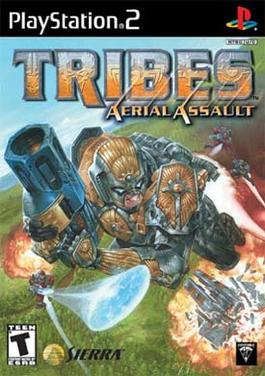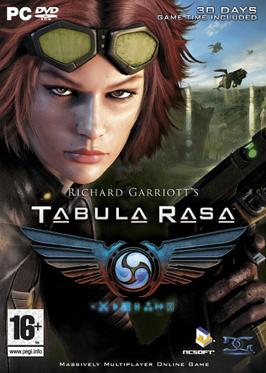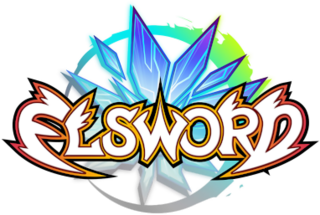
Rise of the Triad: Dark War is a first-person shooter video game, developed and published by Apogee Software in 1995. The player can choose one of five different characters to play as, each bearing unique attributes such as height, speed, and endurance. The game's story follows these five characters who have been sent to investigate a deadly cult, and soon become aware of a deadly plot to destroy a nearby city. Its remake was designed by Interceptor Entertainment and released by Apogee Games in 2013. The shareware version of the game is titled Rise of the Triad: The HUNT Begins.
Deathmatch, also known as free-for-all, is a gameplay mode integrated into many shooter games, including first-person shooter (FPS), and real-time strategy (RTS) video games, where the goal is to kill the other players' characters as many times as possible. The deathmatch may end on a frag limit or a time limit, and the winner is the player that accumulated the greatest number of frags.
Guild Wars is an online role-playing game franchise developed by ArenaNet and published by NCSOFT. The games were critically well received and won many editor's choice awards, as well as awards such as Best Value, Best Massively Multiplayer Online Role-Playing Game (MMORPG), and Best Game. Guild Wars was noted for being the "first major MMO to adopt a business model not based on monthly subscription fees", its instanced approach to gameplay, and the quality of the graphics and play for computers with low specifications. In April 2009, NCSoft announced that 6 million units of games in the Guild Wars series had been sold. The sequel and fourth major entry into the series, Guild Wars 2, was announced in March 2007 and released on August 28, 2012. It features updated graphics and gameplay mechanics, and continues the original Guild Wars tradition of no subscription fees. The Guild Wars series had sold 11.5 million copies by August 2015

Tribes: Aerial Assault is an online first-person shooter video game released for PlayStation 2 in 2002 by Sierra Entertainment. It was one of the first PlayStation 2 titles designed almost exclusively for online play and was the first online PlayStation 2 shooter that supports both modem and broadband connections. It was announced in tandem with Sony's online strategy for the PlayStation 2 at E3 2001.

Richard Garriott's Tabula Rasa is a defunct MMORPG developed by Destination Games and published by NCsoft, designed in part by Richard Garriott. The game is a role-playing video game that blends certain shooter aspects into the combat system. It was officially released to retail on November 2, 2007, with customers that pre-ordered the game allowed access to the live servers from October 30, 2007. The development team released updates, called "Deployments," nearly every month following launch. The game required a monthly subscription.
Dungeon Runners was a medieval fantasy, often satirical MMORPG developed and published by NCSOFT. It featured gameplay similar to the Diablo series of games.
Infinity Online is a free action MMOG created by the Korean software company Windysoft. It was supposed to be released on October 12, 2006, but due to an IDC problem, was released internationally on October 17. Gameplay is similar in style to Rakion with separate game rooms for players to enter, and players have the option of using a mouse and keyboard or a controller to control their character. There are both player versus player and mission modes where players cooperate to defeat AI enemies. The in-game currency is the luna. Game Tribe is currently working on the Europe version of Infinity Online.

Guild Wars is a multiplayer online action role-playing game developed by ArenaNet, a subsidiary of South Korean game publisher NCSOFT, and released in 2005. As the original installment of the Guild Wars series, its campaign was retroactively titled Prophecies to differentiate it from the content of subsequent releases. The game contains a co-operative role-playing portion and a competitive Player versus Player (PvP) portion. In PvP, players may use either their co-operative characters or PvP-exclusive characters who are inherently maximum level and have account-based access to unlocked content.

Global Agenda is a class-based shooter online team-based game by Hi-Rez Studios developed using Unreal Engine 3. Global Agenda was started in 2005 as the studio's first project. The game went live on February 1, 2010. In April 2011, Global Agenda was re-released as a free-to-play game. The game's servers were shut down in 2018 and reopened in 2022.

Counter-Strike Online (CSO) is a tactical first-person shooter video game, targeted towards Asia's gaming market released in 2008. It is based on Counter-Strike and was developed by Nexon with oversight from license-holder Valve. It uses a micropayment model that is managed by a custom version of Steam.

CrimeCraft was a free-to-play online Persistent World Next-generation Shooter dubbed "PWNS" by Ukrainian developer Vogster Entertainment and published at retail by THQ. The game is set in the near future where the world lies in anarchy and gangs have replaced governments.
Bloodline Champions is a free-to-play action game developed by the Swedish company Stunlock Studios. Bloodline Champions won both "Game of the Year" and "Winner XNA" in the Swedish Game Awards 2009. The game officially launched in the United States on January 13, 2011. The spiritual successor to the game, Battlerite, created by the same developer Stunlock Studios, was released as a free-to-play game on November 7, 2017.

Elsword is a free-to-play, 2.5D action MMORPG developed by the South Korean company KOG Studios. It features real-time action gameplay and includes both player vs. environment and player vs. player modes. There are fourteen playable characters within the game, each with unique backstories and distinct abilities. While playing the game is free, some items and costumes can be purchased through an in-game "Item Mall" using real currency. The game was originally made with the intention of being the spiritual successor to Grand Chase by upgrading the graphics from 2D to 2.5D.

MicroVolts is an online multiplayer shooter developed by Korean developer SK iMedia and published by Toronto-based publisher Rock Hippo Productions for Windows (PC). MicroVolts released its first closed beta phase on August 12, 2010 and launched its second closed beta on January 28, 2011. The game's open beta phase began on March 10, 2011. Rock Hippo Productions announced that the official release of the game would start on June 9, 2011. It was shut down on 9. September 2017 9AM GMT and the rights were allegedly sold to Masangsoft.
Special Force is an online free-to-play first-person shooter game developed by the South Korean game developer Dragonfly. Dragonfly is a South Korean video game developer and publisher based in Seoul. While a small company, it is notable for releasing many popular games both in Korea and globally including Special Force and Karma and continues to release games both domestically and abroad.

Puzzle & Dragons is a puzzle video game with role-playing and strategy elements, developed and published by GungHo Online Entertainment for the iOS, Android, and Amazon Fire platforms.
Robocraft is an online vehicular combat game developed and published by Freejam Games. The game is set on different planets, with players constructing robots to fight with and against others in battle. The game features contained garage bays in which players can build various functional vehicles with basic block-based parts, such as cubes and wheels, along with weapons that can be used for combat. The initial alpha build was released in March 2013, and gained over 300,000 players by the following year. It officially released out of beta on August 24, 2017.

Master X Master (MXM) was a multiplayer online battle arena (MOBA) video game developed and published by NCsoft.
Overwatch and Overwatch 2 are online team-based first-person shooters developed by Blizzard Entertainment, and released worldwide in May 2016 and October 2022, respectively. Players select from one of over 30 heroes, broadly classified into the three roles of Tank, Damage, and Support, and work with their team to attack or defend map objectives. Each hero has a unique set of weapons, abilities, and skills, which players use to coordinate with their team to overpower the other. Overwatch supports both casual and ranked matchmaking, as well as a rotating set of arcade modes, and the game has since become a popular esport, featuring the Overwatch League that started in 2018. The game has been both a critical and financial success for Blizzard, exceeding over 30 million players and obtaining over US$1 billion in revenue within its first year.
Overwatch and Overwatch 2 are team-based first-person shooter games developed by Blizzard Entertainment. Overwatch was released in May 2016 for several platforms. The game features a number of gameplay modes that support casual play, ranked play, and competitive modes used for professional esports events, such as the Overwatch League. Overwatch 2 was released in October 2022 with the same player versus player (PvP) modes, and will later include new player versus environment (PvE) co-operative multiplayer modes.











